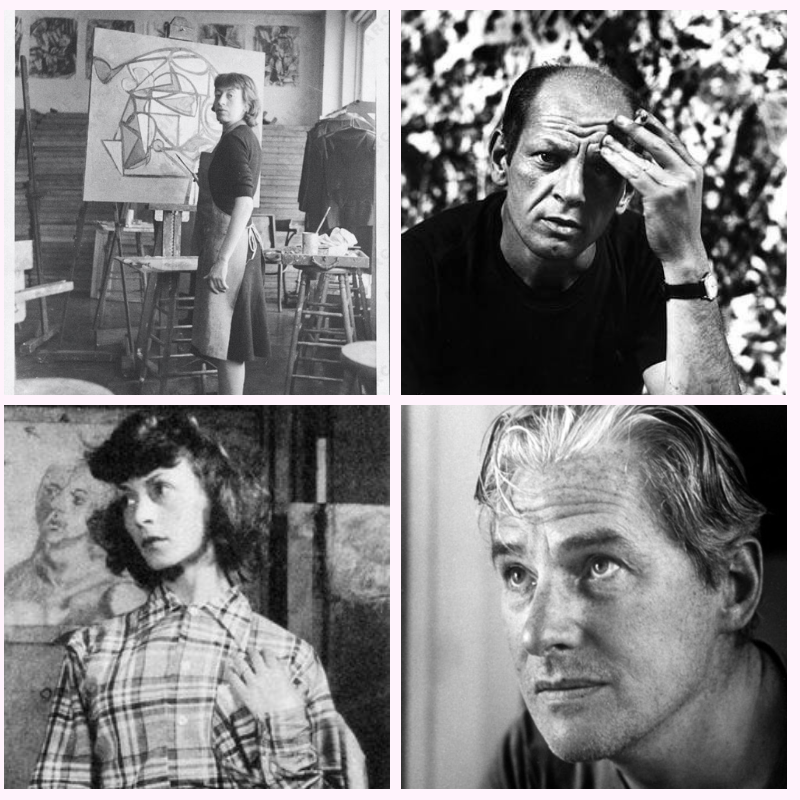Episode #34: Rivals- Pollock vs. de Kooning (Season 3, Episode 3)
This episode is sponsored by The Great Courses Plus. Get a FREE month of unlimited access to over 9,000 lectures presented by engaging, award-winning experts on everything from art to physics, interior design and world languages. Sign up today at thegreatcoursesplus.com/ART.
The art world is a man’s world- or, at least, it used to be entirely one. This shouldn’t be surprising to anyone who is a longtime listener of the ArtCurious Podcast, because we’ve touched multiple times on the difficulties that have faced women who have sought careers as artists. Now, thankfully, in the age of #metoo, the male-heaviness of the art world is changing a bit, as it is in other facets of society. But turning back the clock to any other era in history, and the reality is that it was totally a man’s game. And the absolute manliness of it all was compounded intensely in one particular time and place: post-war America, where it was all about brusque machismo, the biggest innovations, and the biggest splash. It was a measuring contest like none other, and two larger-than-life characters were at the center of it all.
Episode Credits
Production and Editing by Kaboonki. Theme music by Alex Davis. Social media assistance by Emily Crockett. Additional research and writing for this episode by Stephanie Pryor.
ArtCurious is sponsored by Anchorlight, an interdisciplinary creative space, founded with the intent of fostering artists, designers, and craftspeople at varying stages of their development. Home to artist studios, residency opportunities, and exhibition space Anchorlight encourages mentorship and the cross-pollination of skills among creatives in the Triangle.
Additional music credits
"The Walk" by Dee Yan-Key is licensed under BY-NC-SA 4.0; "Catching Glitter" by Split Phase is licensed under BY-NC-SA 3.0 US; "Aquasigns" by Tagirijus is licensed under BY-NC-SA 4.0; "You know why" by Loyalty Freak Music is licensed under CC0 1.0 Universal License; "Tethered" by Nctrnm is licensed under BY 4.0. Based on a work at https://soundcloud.com/nctrnm/; "Dancing on the Seafloor (KieLoKaz ID 110)" by KieLoBot is licensed under BY-NC-ND 4.0; "Attempt 7" by Jared C. Balogh is licensed under BY-NC-SA 3.0
Ad music: "Ground Cayenne" by The Good Lawdz is licensed under BY-SA 3.0
Recommended Reading
Please note that ArtCurious is a participant in the Bookshop.org Affiliate Program, an affiliate advertising program designed to provide a means for sites to earn advertising fees by advertising and linking to bookshop.org. This is all done at no cost to you, and serves as a means to help our show and independent bookstores. Click on the list below and thank you for your purchases!
Links and further resources
The New York Times: "Ruth Kligman, Muse and Artist, Dies at 80"
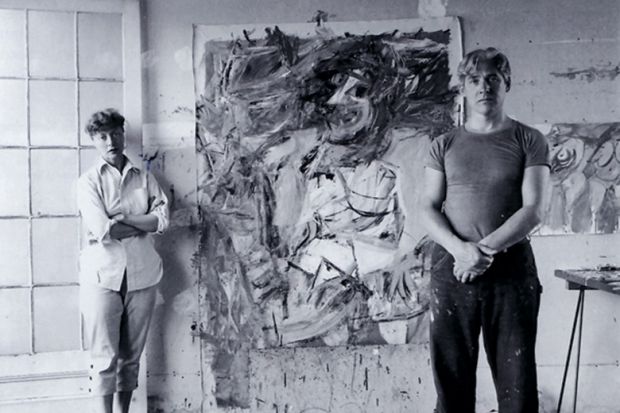
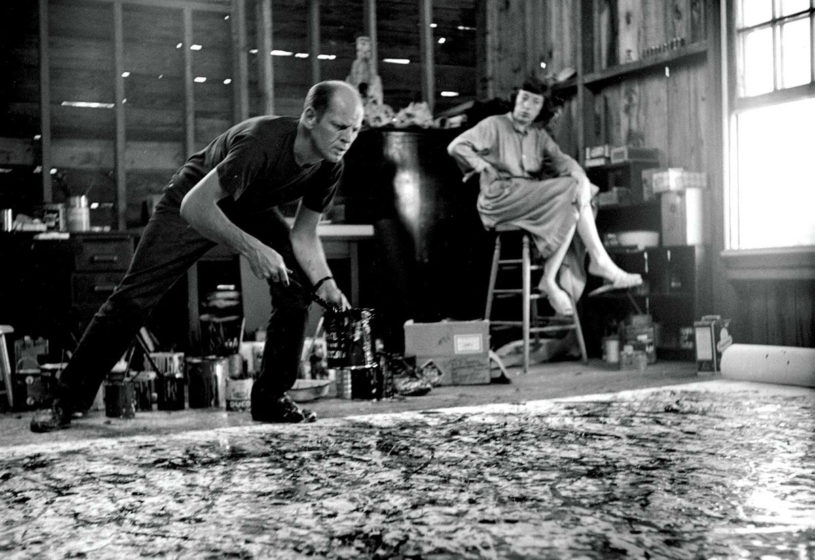


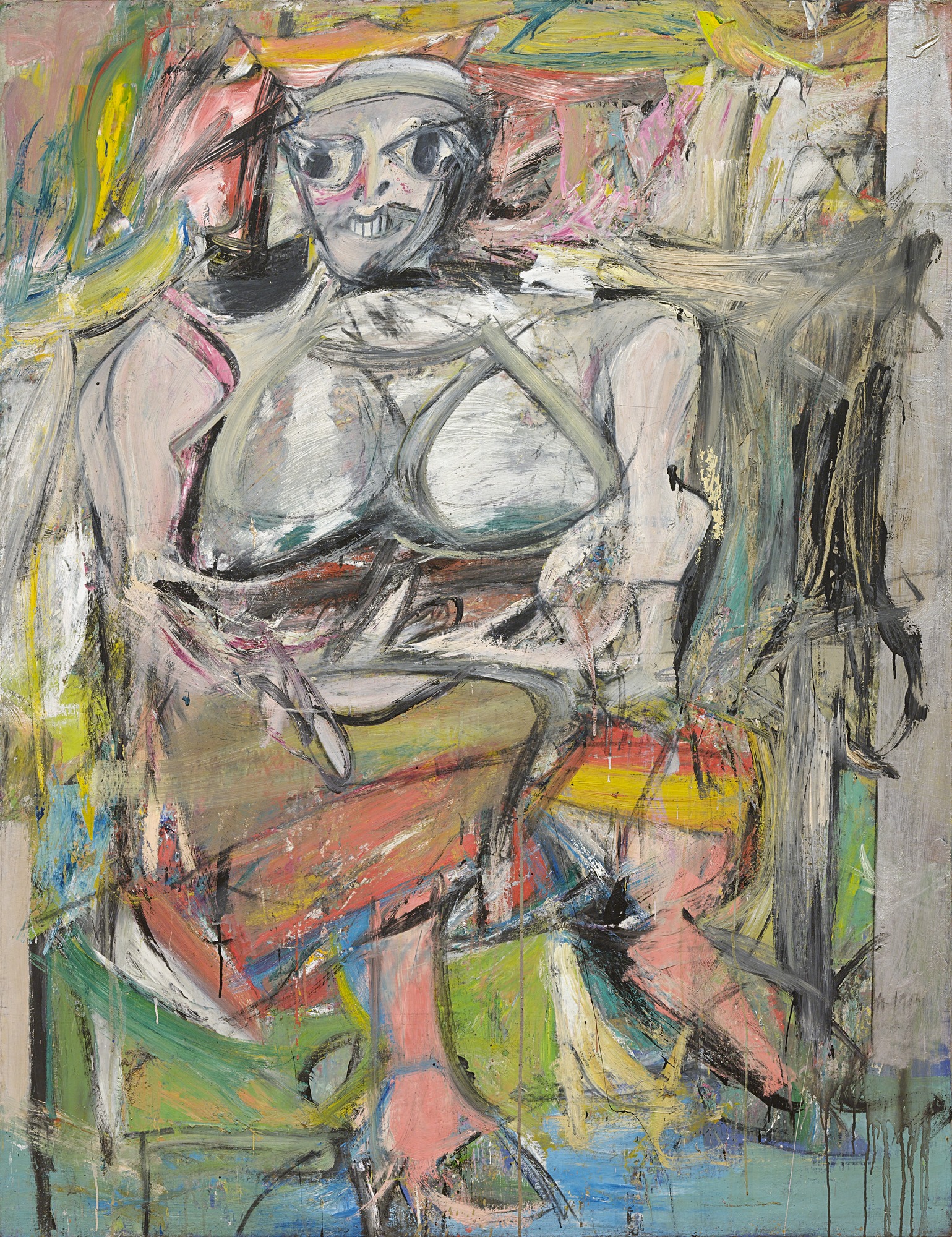
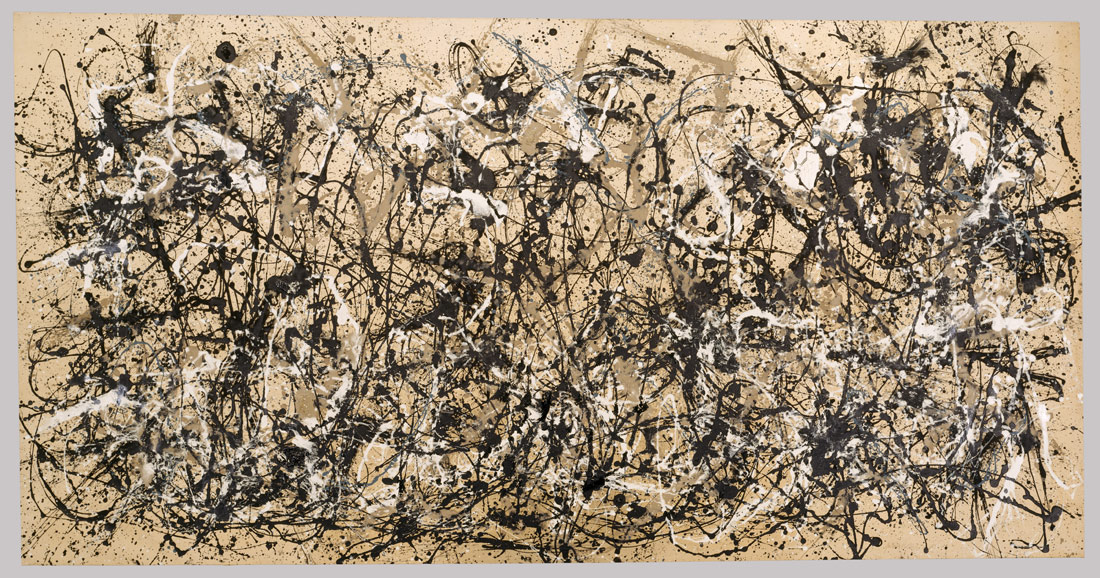
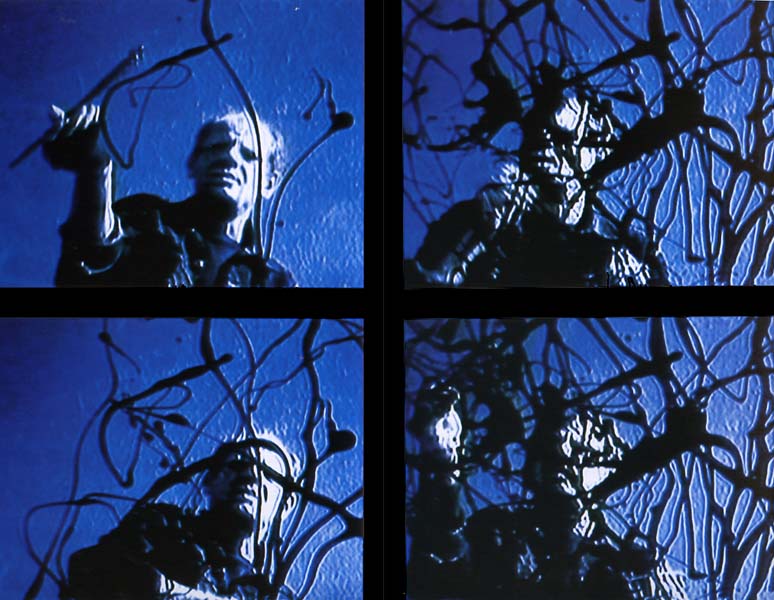
Episode Transcript
The art world is a man’s world- or, at least, it used to be entirely one. This shouldn’t be surprising to anyone who is a longtime listener of the ArtCurious Podcast, because we’ve touched multiple times on the difficulties that have faced women who have sought careers as artists. Now, thankfully, in the age of #metoo, the male-heaviness of the art world is changing a bit, as it is in other facets of society. But turning back the clock to any other era in history, and the reality is that it was totally a man’s game. And the absolute manliness of it all was compounded intensely in one particular time and place: post-war America, where it was all about brusque machismo, the biggest innovations, and the biggest splash. It was a measuring contest like none other, and two larger-than-life characters were at the center of it all.
Some people think that visual art is dry, boring, lifeless. But the stories behind those paintings, sculptures, drawings and photographs are weirder, crazier, or more fun than you can imagine. And today, we are continuing our series on great rivalries in art history with the bitter, twisty relationship between Jackson Pollock and Willem de Kooning. Welcome to the ArtCurious Podcast, exploring the unexpected, the slightly odd, and the strangely wonderful in Art History. I'm Jennifer Dasal.
Our story of one of the gnarliest wars of in modern art begins not with our artists themselves, but with another man entirely. He was born Ivan Dabrowsky in Kiev, in what was then part of Russia, in the 1880s— the exact date of his birth is disputed. After earning a law degree and serving in the czarist military before fleeing Russia during the Revolution, Dabrowsky ended up in Paris where he was surrounded and stunned by the modern art being created there. We’re talking serious game changers like Pablo Picasso, Giorgio de Chirico, Fernand Leger, Henri Matisse, Hannah Hoch, and the like, and it was an eye-opener for Dabrowsky. By the early 1920s, he moved to New York, and it was there that he began his pursuit of a career as a painter, and changed his name to the Yankee-friendly moniker, John Graham.
Graham himself did end up being an influential artist, as well as a writer and an art collector himself, but his story is important for us today because he served as a kind of conduit for what would become a big art world brawl. He was a middle man, the person who would ultimately be the impetus for bringing our two main figures together. It began with the connections he made at the famed Art Students League in New York, where he studied painting under the lauded Ashcan School artist and member of the art group The Eight, John Sloan. During his tenure at the Art Students League, Graham became the center of a social and experimental art circle that involved many of the up-and-comers who would later become bold names in art history textbooks: Stuart Davis, Arshile Gorky, and a Dutch transplant to the U.S. named Willem de Kooning.
Born in Rotterdam, the Netherlands in 1904, Willem de Kooning had left school at the age of 12 to begin an apprenticeship with a group of commercial artists, eventually getting work as a commercial artist himself. He was classically trained at the Rotterdam Academy of Fine Arts and Technique and immediately made waves as a highly-skilled draughtsman. But like so many others before and after him, de Kooning felt that Europe was quickly becoming an unstable and unfriendly place, so he, like Graham, escaped to the U.S., landing in New York in 1927 after stowing away on a ship, which is a detail that adds a significant amount of badassery to his story. Strangely enough, he didn’t originally come to the U.S. with hopes of being a fine artist, but originally had dreams of achieving the kind of heights depicted in many of the popular movies he’d seen in Rotterdam: the Wild West, the glitter of Hollywood, the big money of the big city. But after toiling in various jobs— as a commercial artist and a house painter primarily— for nearly a decade, de Kooning finally segueing his talents into a job as a mural painter under the Works Progress Administration in 1936, a life-changing experience which convinced him to take up painting full-time and eventually lead to a sea change in the course of modern art.
Willem de Kooning had never stopped painting and working in fine arts, even while he was seeking odd jobs in that first decade after his arrival in the United States. And before he lucked out with the WPA gig, he sought opportunities to take time out and hone his craft. And it was during such a moment, when he was painting at an artist’s colony in Woodstock, New York, in 1928 that he first met John Graham.
De Kooning and John Graham got along famously, and stayed close throughout the 1930s and 1940s. In many ways, Graham became something of a mentor to De Kooning and other burgeoning modernists of the time, and he did what he could to support their careers. In 1942, he curated an exhibition at McMillan Inc., a gallery in New York City, where he showed a handful of American modernists alongside works by established European artists like Picasso, Matisse, Braque, and Modigliani. Included in the show was de Kooning, alongside Stuart Davis and a very promising painter out of Brooklyn named Lee Krasner. We’ll be circling back around to Krasner more fully in our next episode, suffice to say that Davis, de Kooning, and Krasner had all known each other prior to the McMillan Gallery installation. Who none of them knew very well, though, was a rough-and-ready guy by the name of Jackson Pollock.
Paul Jackson Pollock was born in Cody, Wyoming in 1912, as the youngest of five sons. Throughout his earliest years, his family ambled about the West, moving from Wyoming to Arizona before finally settling in California. When Jackson, as he was known, was eight years old, his father abandoned their family, leaving his mother, Stella, in charge of the brood. Stella was a proud, strong, and sometimes overbearing woman who had artistic aspirations herself, so while she may not have supported her children’s artistic leanings in the same way that a parent today might, she certainly didn’t deter it. Just as important was the influence of another family member. Charles, Jackson’s older brother, was himself a talented artist who took on the role of father figure to his little brother and encouraged and inspired him to take heart in his talent. This was particularly helpful because while Pollock was in high school in Los Angeles, he was flailing badly, and ended up being expelled—twice— not sure how that happened-- before just giving up on the endeavor entirely. But it was all good, because he had his art, and Charles had a plan.
Charles Pollock had moved to New York to study at the Art Students League in 1926 under Thomas Hart Benton, a leading figure in social realism and figural art in America at the time. Charles convinced Benton that his little brother had the right stuff and encouraged Benton to take him on as a student, and so, in 1930, Jackson Pollock joined the League and his official training as an artist began. It wasn’t just Benton’s style and academic mentorship that would have a great influence on Pollock— he would also become another father figure to replace his own absentee dad. Pollock became so close to Benton’s family that he would even babysit Benton’s son. But like a real father-son relationship, it had some its downsides, especially the carrying-on of some not-so-great traits. Benton was a heavy drinker with a penchant for a showy machismo and this was like catnip to 18-year-old Pollock. He would adopt those same tendencies, to devastating effect.
Much like Willem de Kooning, Pollock began working as an independent artist in 1936. Though he struggled for several years to find his voice, at the end of 1942, he had several breakthroughs, one of which being that he was selected as one of the artist in John Graham’s McMillan exhibition. In advance of the opening for the McMillan show, a curious Lee Krasner convinced Willem de Kooning to go with her to see Jackson Pollock in his studio. Interestingly, both Pollock and Krasner thought that this was their first meeting, but it actually wasn’t, having been briefly introduced in 1936 when, while working at the WPA simultaneously, Pollock asked Krasner out on a date. It didn’t take at that point, obviously, and it wasn’t until this studio visit in 1942 that either really made an impression on one another. But the stars aligned at this point, and they became romantically linked quickly after that.
The relationship between Pollock and de Kooning— well, rivalry, really— didn’t actually begin until a bit later. In his reminiscences about their first meeting, it turns out that de Kooning recalled very little and it seemed to have hardly any lasting effects on either his art or himself personally. But Pollock had a different reaction. According to Sebastian Smee in his fantastic book The Art of Rivalry: Four Friendships, Betrayals, and Breakthroughs in Modern Art, Pollock keenly saw that he had one singular advantage over the Dutchman. He was a true-blooded American, born and raised, and even better, he was a Westerner. Thus, de Kooning may have viewed him on a personal front with not a little bit of envy, due to his own wishes and predilections for the glamour of the mythologized west. This early interaction helped Pollock realize he could play up his “cowboy” persona to his advantage, and, to a lesser degree, help to establish his own cult of personality.
It wasn’t only Jackson Pollock’s cool masculine vibe that gave him a leg up on de Kooning. As mentioned previously, he had an incredible year in 1942 in a way that jump started his career so fervently that there was no turning back. He was making it happen. First and foremost, Peggy Guggenheim, a wealthy American heiress and art patron, had opened an influential art gallery in New York called The Art of This Century, and at the urging of the gallery’s assistant director, Howard Putzel, as well as that of artist Piet Mondrian, Guggenheim agreed to include one of Pollock’s works, called Stenographic Woman, in a juried exhibition that shot him to stardom. In an article for The Nation, Clement Greenberg, who is possibly the most famous art critic ever, described Pollock as “the strongest painter in America”— a huge honor. Pollock would go on to have two solo exhibitions with Peggy Guggenheim before she closed up Art of This Century and decamped to Europe in the late 1940s. But she didn’t just ditch Pollock— she made another move that would significantly alter his life.
Jackson Pollock married Lee Krasner in 1945, and a month after their wedding, they moved out to Long Island, settling in the little hamlet of Springs, in East Hampton. It was in his Springs studio that Pollock began experimenting with his painting methods, leading him to start dribbling and splattering paint directly onto his canvases, often while they were laying, unstretched, on the floor. When Clement Greenberg, ever a Pollock champion, saw them, he was astounded and identified them for what they were: a turning point in art, the new direction. And when Peggy Guggenheim got wind of this, she did something that seems rather magnanimous: since her New York gallery had closed up shop, she went to another space, the Betty Parsons Gallery, and convinced Parsons herself to take on Pollock and show his brand-new works. The Betty Parsons show in 1948 wasn’t just the most successful of Pollock’s career to date, but it also catapulted him to Art Star status practically overnight, and by the following year, he was a household name, having landed on the cover of Life Magazine.
The works from 1949 and 1950 are often heralded as Pollock’s best. Often considered a singular monument among these is Autumn Rhythm (Number 30), now at the Metropolitan Museum of Art. Autumn Rhythm is that perfect showpiece of Pollock’s active style, seemingly spontaneous but actually rather controlled at the same time. It’s like jazz. It might look like your five-year-old can make it, but it’s way more complicated than that. He began this, and many works, with diluted black paint splashed onto the canvas as a kind of base layer before, in this case, adding webs of white, brown, and even a flick of blue here and there. Your eyes dance over these canvases- it’s hard to stop and look in one place, and perhaps that’s the point. It’s abstract expressionism, after all, and is thus a nice expression of the controlled chaos of modern life.
Now, we should never underestimate the power of good old envy as a motivator. Among the many who viewed Pollock’s trailblazing splatter-painted show at Betty Parsons was Willem de Kooning. De Kooning had kept tabs on Pollock’s career in the 1940s all while struggling with his own, and the “drip paintings,” as Pollock’s new pieces were deemed, astounded him. De Kooning found himself taken aback by the spontaneous, almost accidental qualities of the drip works, something which confounded de Kooning. His own attempts at such impulsiveness hadn’t yet worked out very well. He was a perfectionist, and often spent time editing and effectually “erasing” portions of his works instead of adding to them. But de Kooning saw what Pollock had done and knew he needed to up his game, and thankfully, his pieces— with looser, more expressive brushstrokes and a great emphasis on the human, especially female, figure, growing more and more abstract on a seemingly daily basis. Luckily, in the same year as Pollock’s Betty Parsons blockbuster, de Kooning had his first solo exhibition, at the Charles Egan Gallery. Although none of the works sold, he received solid praise from several critics, including Clement Greenberg, and after years of toil, it was was clear that de Kooning was beginning to find his own voice. De Kooning’s arrival on the scene as a solid player made Jackson Pollock sit up and take notice. In 1950, he noted to fellow artist Grace Hartigan that, quote, and bad word warning here, “everyone is shit but de Kooning and me.” Unquote. To me, this shows that Pollock understood, begrudgingly, de Kooning’s growing importance, and possibly also that it began to worry him. And thus began a great parry of back-and-forths between him and Pollock as each tried to grab the crown of Greatest Living American Artist.
The early 1950s produced some of Willem de Kooning’s most important work of his entire career— his “Woman” series, wherein he used the female body as a basis for an exploration of abstraction and technique. Woman I, undoubtedly the most famous work of the series and found today in the Museum of Modern Art in New York, best exemplifies what was so attention-grabbing and startling about de Kooning’s new direction. The woman featured in Woman I has the same large breasts and wide hips that have been favored in depictions of fertility goddesses throughout time, but what is different is how violently she is portrayed. She’s huge and hulking, created out of a series of slashing, almost wild-seeming brushstrokes that have made some recent critics wonder if it was a practically literal depiction of pure misogyny. Sure, Woman I is grotesque— she’s even got misshapen eyes and buck teeth to boot— but there’s also a force and an energy to her, too, as if her presence cannot be denied. It’s quite possible that de Kooning meant his Women to be comedic, too, at least to some degree, because they all seem to be smiling. Whether or not their grins are ones of amusement or menace, and whether or not the artist is mocking womankind, are two unresolved questions.
In the early 1950s, things appeared, on the outside, to be going very well for Jackson Pollock, too. His newfound name recognition, combined with the nation’s interest in the working methods of the man they dubbed “Action Jackson,” had reached a fever pitch. In 1950, a documentarian named Hans Namuth approached Pollock with an idea for a film about Pollock and his techniques, but Pollock wasn’t so sure about the whole thing. Ultimately he agreed to participate in the film, but when Namuth asked him to create works of art in front of the camera, Pollock began to lose his confidence, citing that it felt insincere, less art-making and more performance. It’s a shame, really, because Namuth’s documentary is honestly one of the coolest artifacts we have about practically any artist, ever. A scene in which Namuth’s camera captures Pollock dripping paint onto a pane of glass fitted above the camera lens is probably one of the most iconic moments in 20th century art. But Pollock hated the whole thing— it made him feel like a fraud and a sell-out, and it drove him to a desperate decision. For most of his adult life, Pollock suffered from severe alcoholism and was treated for a variety of psychological problems. With Krasner’s care and support, he had battled his demons, but nevertheless found it difficult to form many close bonds and his own machismo, ego, and competitiveness frequently led him to barroom brawls. But in the late 1940s, he got sober, and stayed that way for two years, until the evening that the final scene of Namuth’s documentary was shot. He was not well-equipped to deal with fame, so he sought solace where he could— back in the bottle.
All things came to a head in 1953 for the big open of Willem de Kooning’s Woman series, shown for the very first time at the Sidney Janis Gallery in New York. Most of the attendees were in awe of de Kooning’s works and lauded him. But then Jackson Pollock walked through the door. He didn’t walk across the room to shake de Kooning’s hand or offer his congratulations. Instead, he raised his voice and yelled across the gallery, “Bill, you betrayed it. You’re still doing the same goddamned thing. You know, you never got out of being a figurative painter.” It seemed that Pollock was sneering at a purported lack of inventiveness on de Kooning’s part— his inability to find a means of pure and total abstraction, as Pollock himself did. But that wasn’t it at all. It was that Pollock’s own career, by 1953, was on a downward trajectory due to his intense alcoholism, and he was using de Kooning’s own art opening to publicly lash out at his rival. It was indicative of a sea change, and both artists knew it. Although de Kooning had been in Pollock’s shadow throughout the mid and late 1940s, by 1953 he had supplanted Pollock as the best modern artist in America.
As Pollock’s alcoholism grew, his life spiraled out of control and his popularity faded. Pollock left Betty Parson’s gallery in 1952 and an article in Partisan Review declared he was, quote, “washed up” in 1955. And sadly, things never got better for him. His drinking consumed him and, fed up with it and his philandering, Lee Krasner left her husband during the summer of 1956, seeking refuge in Europe to visit friends and to pursue her own artistic endeavors. But she had to cut her trip short when she received word that Pollock had been killed after crashing his car in Long Island while driving with his mistress, Ruth Kligman, and her friend Edith Metzger. Kligman would be the sole survivor. In a cruel twist of fate, the rivalry between de Kooning and Pollock came to an end.
Sebastian Smee states that after the death of Jackson Pollock, Willem de Kooning, quote, “seemed bent on maintaining a connection with his dead friend and rival.” Unquote. And the lengths that he went to to maintain this connection is really quite astounding. First is the oft-repeated tale that, at Pollock’s own funeral, de Kooning is said to have flatly declared, quote, “It’s over. I’m number one.” It’s cutthroat and cruel, and it also very clearly illustrates that the notion of rivalry had played the central role in his understanding of their relationship. On a personal level, de Kooning did something just a shocking less than a year after Pollock’s death when he began having an affair with Pollock’s own grieving mistress, Ruth Kligman, the one who survived the fatal crash. They dated for several years— all while de Kooning was married, by the way, to another important artist, Elaine de Kooning. And then, in 1963, a final funky connection. Absconding from the city, de Kooning moved to Springs— the very same town where Pollock and Krasner had lived years before, and there he bought a house across the street from Green River Cemetery… where Jackson Pollock was buried. He lived in East Hampton for the rest of his very long life, succumbing to complications from Alzheimer’s at the age of 92 in 1997. Maybe he just loved Springs. Maybe the house across the street from the cemetery was a really good deal and had really great northern light for painting, and a big tract of land for building a studio. Or maybe de Kooning, consciously or unconsciously, did it to thumb his nose a his dead rival, asserting his superiority once and for all. Maybe it’s all the above.
Pollock and de Kooning are often spoken of in the same breath as two of the great innovators of mid century modern art, alongside Andy Warhol, Mark Rothko, and Jasper Johns, to name a few. Luckily, though, we are able to view them as separate and equally important for the works of art they made— both of them were hugely influential for the generations who came after them, and we no longer feel quite the urge to pit them against one another as they themselves did. But there are two people whose lives and artistic careers were so overshadowed by Pollock and de Kooning that, even now, they are never discussed without at least alluding to their connections to the male superstars. We’ve already mentioned both of them in this episode— they are Lee Krasner and Elaine de Kooning, the wives of today’s subjects— and their unnecessary (and most likely unwanted) comparison to their famous husbands is the subject of our next episode. That’s coming up in two weeks on the ArtCurious Podcast— don’t miss it.
Thank you for listening to this episode of the ArtCurious Podcast. This episode was written, produced, and narrated by me, Jennifer Dasal, with additional writing and research assistance by Stephanie Pryor. Our theme music is by Alex Davis at alexdavismusic.com, and social media help is by Emily Crockett. Our production and editorial services are provided by Kaboonki Creative. Video. Content. Ideas. Learn more at kaboonki.com.
The ArtCurious Podcast is sponsored primarily by Anchorlight. Anchorlight is an interdisciplinary creative space, founded to foster artists, designers, and craftspeople at varying stages of their development. Home to studios, residency opportunities, and exhibition spaces, Anchorlight encourages mentorship and the cross-pollination of skills among creatives in the Triangle. please visit anchorlightraleigh.com. Thank you so much to the generous folks at Anchorlight for funding this third season.
The ArtCurious Podcast is also fiscally sponsored by VAE Raleigh, a 501c3 nonprofit creativity incubator. This means that you can donate to the show and it is fully tax-deductible! Follow the “Donate” links at our website for more details, and thank you.
As always, you can also go to our website for images, information and links to our previous episodes. That site is artcuriouspodcast.com. And you can contact us via the website, email us at artcuriouspodcast@gmail.com, or find us on Facebook, Twitter and Instagram at artcuriouspod. --and remember to subscribe and review us on Apple Podcasts and tell anyone you want about the show. Check back in two weeks as we continue to explore the unexpected, the slightly odd, and the strangely wonderful in rivalries of art history.





